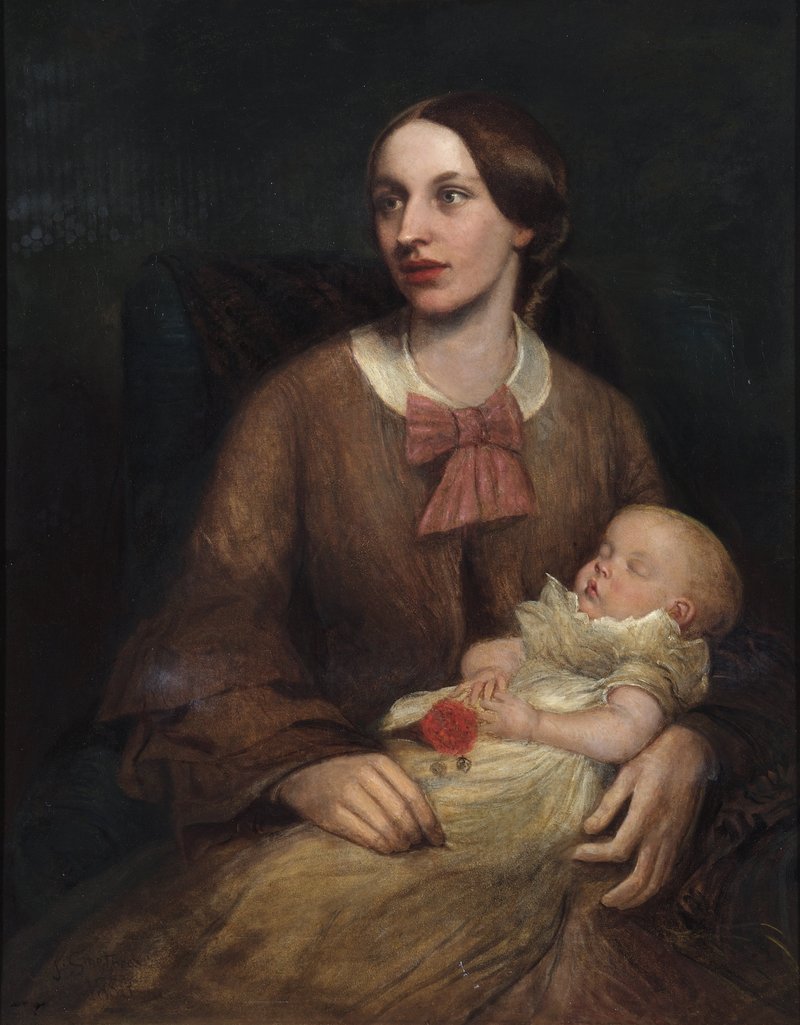Sarah Smetham and Baby John
11 December 2020
11 December 2020
In the second in a series of blogs on Methodist heritage with a festive twist, we take a look at the life and work of Methodist artist, James Smetham.
James Smetham was born in 1821 in Pateley Bridge, Yorkshire. His father, uncle and brother were all Wesleyan Methodist ministers, and his Methodist faith proved to be fundamental throughout his life, providing him with artistic subjects, and some employment. He was a friend of Rossetti, Ruskin, Ford Madox Brown, and others in Pre-Raphaelite circles, and especially with William Davies, who edited his poems and letters.
Smetham’s writing on William Blake, with whom he was sometimes compared, was well regarded. Always a sensitive person (which is reflected in his art), and with fragile mental health throughout his life, Smetham’s mental health collapsed fully around 1877, and he never recovered. He died on 5th February 1889.
As an artist he painted in a variety of genres, but much of his work was small in scale. His poetry, some of which was published, can be found in repositories such as the British and Bodleian libraries, and his art can be found in world renowned collections, including the Tate Gallery, the Ashmolean, and the Methodist collections at the John Rylands Library, Manchester.
Through his art and writing, we can glimpse what sort of person James Smetham was, varying from precise and steady, to frantic and unrefined. Never financially stable, it was his position as drawing master at Westminster College (the Wesleyan teacher training institution) which funded both Smetham’s life, and his artistic passion.

Sarah Smetham and Baby John
It was also whilst at Westminster that Smetham met his wife, Sarah Goble, a music teacher, who went on to be the bedrock of Smetham’s life, providing him with stability, a home, and raising their six children. She is featured in one of Smetham’s larger works, with their eldest son John as the focal point in an interpretation of the traditional ‘Madonna and Child’.
This portrait remained in John’s ownership until he emigrated to South Africa, at which point it passed to his brother, Eric who died during the Battle of the Somme in 1916. The painting remained in family ownership until the death of Smetham’s great-great-grandson in 2016. It was bequeathed as part of the largest known collection of Smetham’s work, which is held by the Oxford Centre for Methodism and Church History, Oxford Brookes University (OCMCH).
2021 marks the 200th anniversary of the birth of James Smetham. To commemorate this the OCMCH will launch a programme which will centre on three themes which were critical to Smetham’s life; art, religion, and mental well-being. Find out more here.
With thanks to Thomas Dobson, Collections and Digitisation Officer, Oxford Centre for Methodism and Church History.
In the first in our series of festive heritage blogs, read about Christmas at Charles Wesley's house in Bristol here.